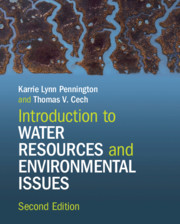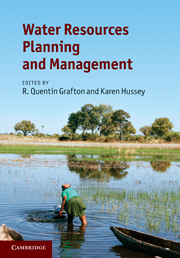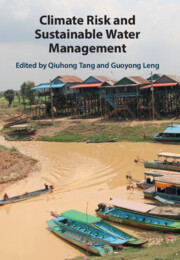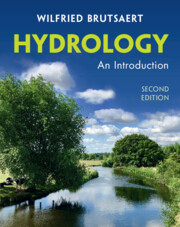Introduction to Water Resources and Environmental Issues
How much water does the world need to support growing human populations? What are the potential effects of climate change on the world's water resources? These questions and more are discussed in this thoroughly updated and expanded new edition. Written at the undergraduate level, this accessible textbook covers the fundamentals of water resources, water law, allocation, quality and quantity, health issues, and provides examples of potential personal actions and solutions. There is a keener focus on climate change, as many of the predictions made in the first edition have now come to pass. This new edition features improved artwork, more active learning prompts, more positive examples of beneficial changes, basic introductions to scientific approaches and a discussion of emerging contaminants and LiDAR technology. It contains strong teaching features, with new 'In Depth' and 'Think About It' sections to encourage class discussion, and homework questions to test students' understanding.
- Equips students with the tools needed to understand the complex world of water resources and environmental issues, and with the knowledge to help them make a positive environmental impact
- Engages students by focusing on current issues that concern every citizen on both national and international scales
- Covers the scientific fundamentals of water resources to enable students to develop a thorough understanding of the subject
- Contains strong teaching features, including 'In Depth' and new 'Think About It' sections to encourage class discussion, and homework questions to test students' understanding
- Informs students on how to recognise when scientific theories differ from opinion, and reflects on the impact that changing governmental leadership has on attitudes and policies towards science
Reviews & endorsements
'Introduction to Water Resources and Environmental Issues is a comprehensive primer on our most precious yet often-neglected resource. With systematic reviews of the critical challenges, this volume offers accessible treatment of thorny problems and provides useful summaries and additional readings. A must-read for students, scholars and practitioners to safeguard water - the foundation of life.' Christopher A. Scott, University of Arizona
'So glad to see this new edition! It's fully updated with contemporary trends and terminology. Particularly insightful are the Think About It features embedded within each chapter, encouraging the reader to consider different facets of evolving water resource issues. Overall, it continues to be a well-organized, highly readable, and comprehensive treatment of a critically important resource.' Ned Knight, Linfield College
'Introduction to Water Resources and Environmental Issues is an encyclopedic journey into the connections between water issues and an array of topics, including human geography, public health, ecology, geology, history and policy. It provides something for everyone: spectacular black-and-white photos, an introduction to virtually all aspects of water science, human interest stories, and great discussion questions.' Kathy Jacobs, University of Arizona
'Although written as a university textbook, I highly recommend this book for readers who wish to understand more about environmental issues affecting water resources. The authors attempt to provide a balanced and realistic approach to an individual's right for access to safe drinking water and the need to protect nature. It certainly was an eye opener for me.' Julie Aitken, The Leading Edge
Product details
August 2021Paperback
9781108746847
440 pages
253 × 204 × 20 mm
1.06kg
Available
Table of Contents
- 1. Perspectives on water and environmental issues
- 2. The water environment of early civilizations
- 3. The hydrologic cycle
- 4. Water quality
- 5. Watershed basics
- 6. Groundwater
- 7. Lakes and ponds
- 8. Rivers and streams
- 9. Wetlands
- 10. Dams and reservoirs
- 11. Drinking water and wastewater treatment
- 12. Water allocation laws
- 13. Roles of federal, regional, state, and local water management agencies
- 14. Water conflicts, solutions, and our future
- Index.







